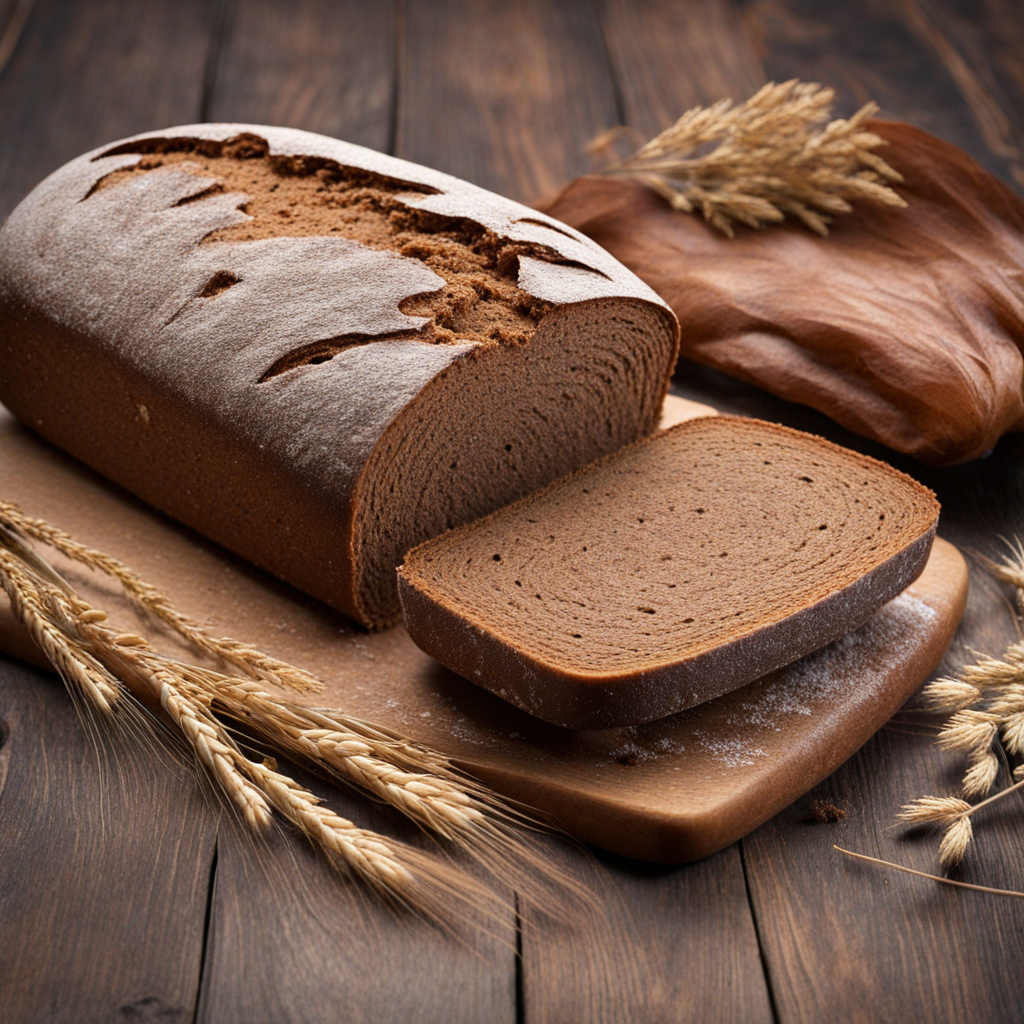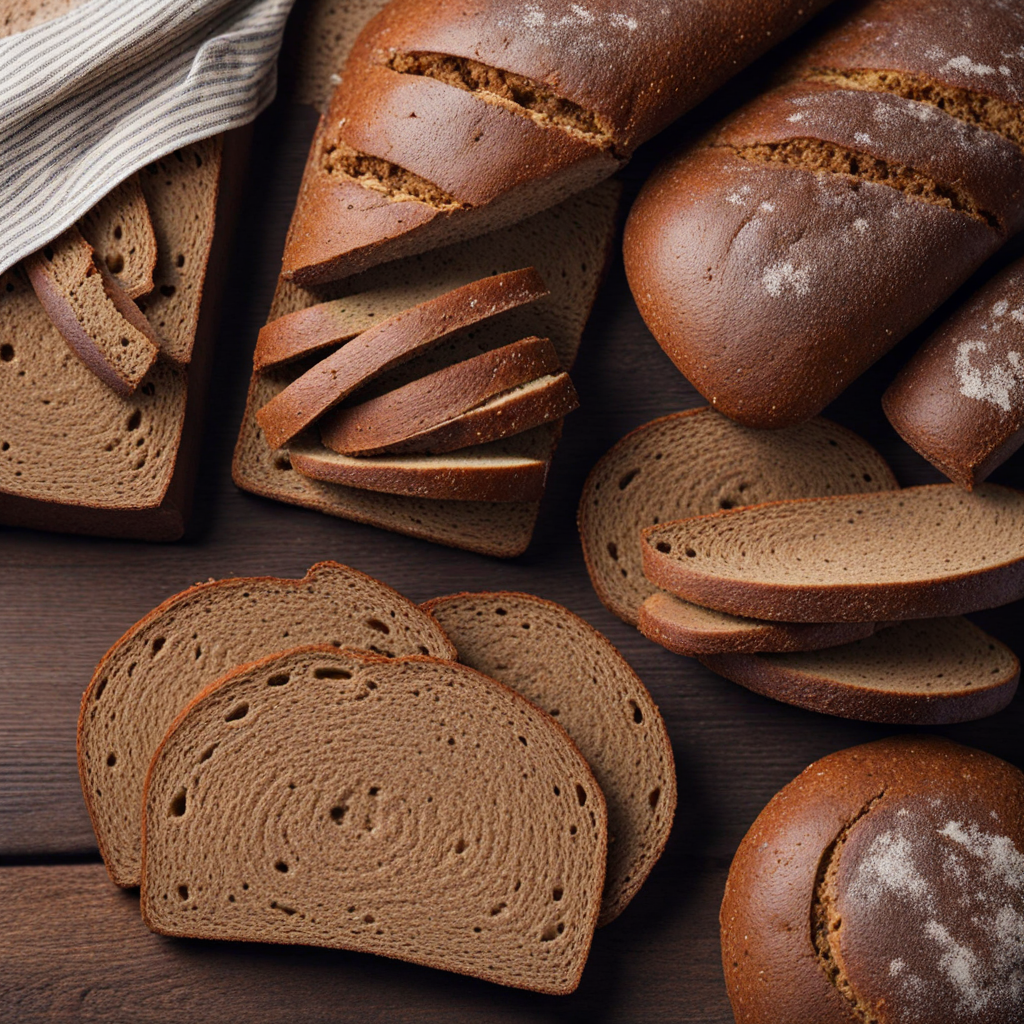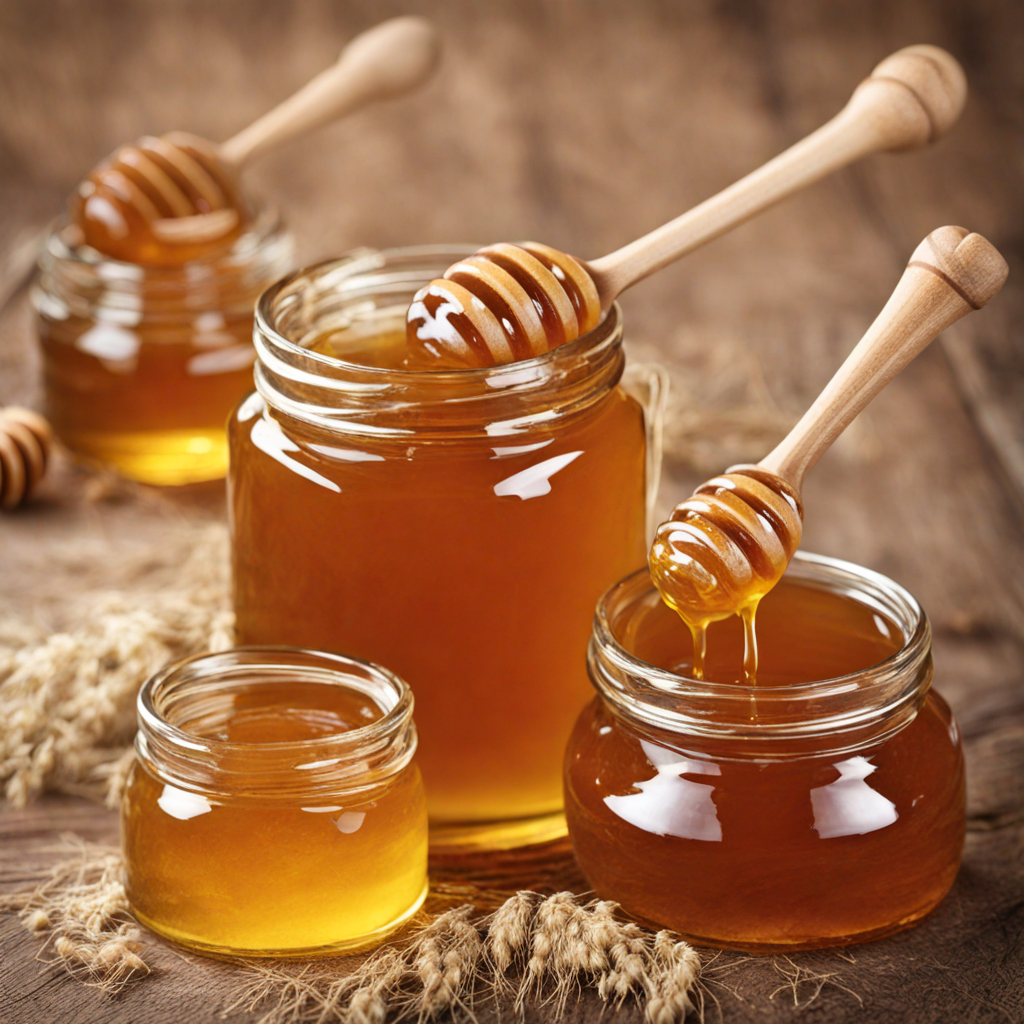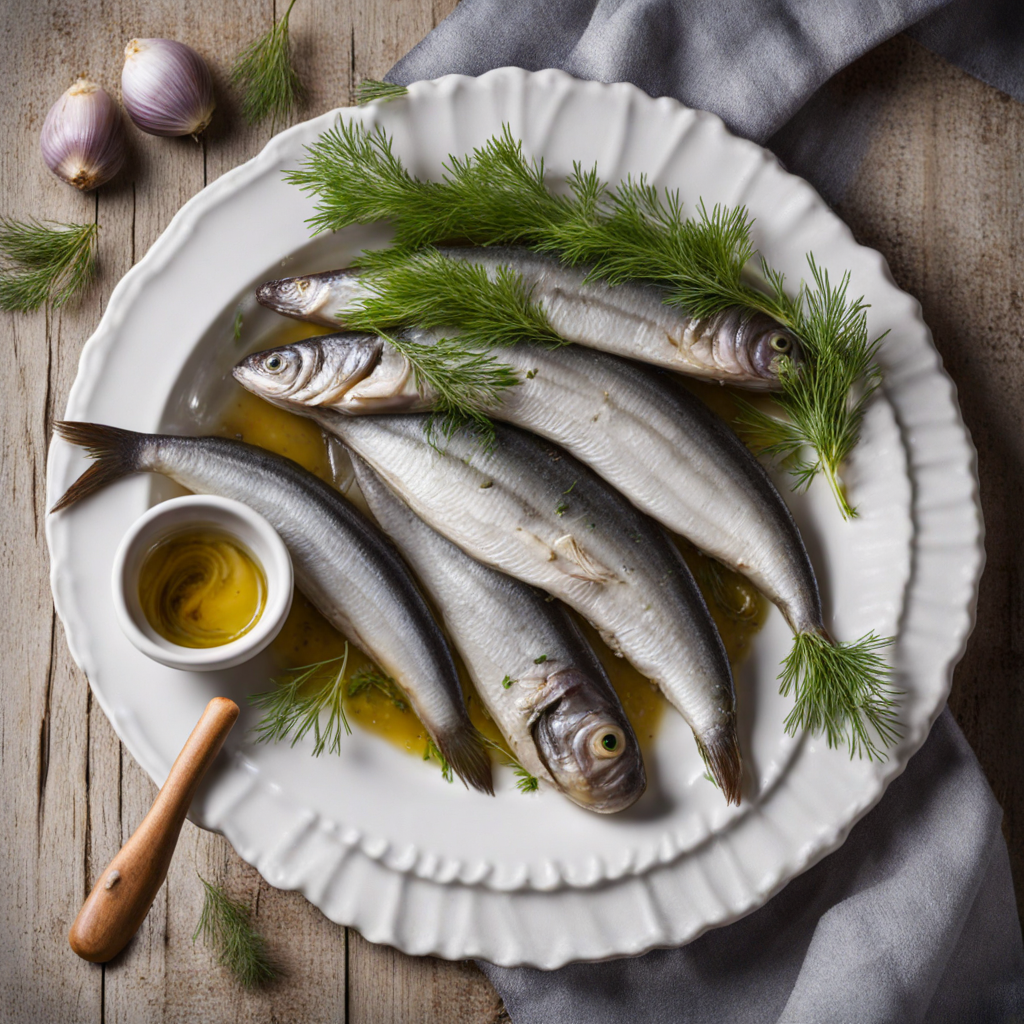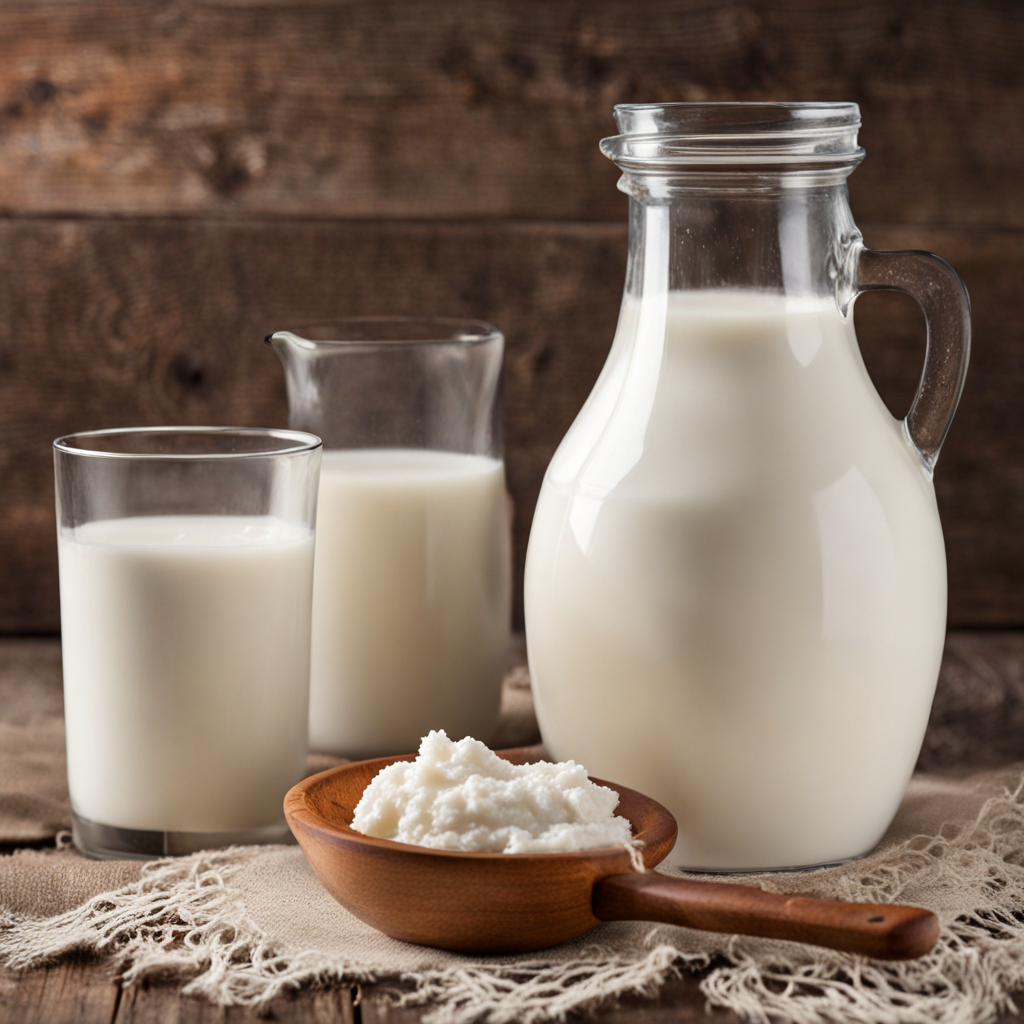Rye Bread
Rye bread, a staple of Latvian cuisine, is renowned for its dense texture and earthy flavor, making it a unique culinary experience. Unlike wheat bread, rye bread is made from rye flour, which gives it a deep, dark color and a robust taste. The fermentation process involved often includes sourdough, imparting a tangy note that complements its natural bitterness. This bread is typically baked for long hours, resulting in a crusty exterior while maintaining a moist, chewy interior, inviting you to savor each bite. Traditionally, rye bread is enjoyed as part of a meal or as a snack, often paired with a variety of toppings. Latvians commonly enjoy it with butter, cheese, or cured meats, but it also serves as a fantastic base for open-faced sandwiches, showcasing the fresh flavors of local ingredients. The complex flavor profile of rye bread allows it to stand up to bold toppings, making it a versatile component in many dishes. It can even be enjoyed with sweet spreads like honey or jam, creating an intriguing balance between savory and sweet. Beyond its flavor, rye bread holds cultural significance in Latvia, often being a centerpiece in family gatherings and festive occasions. It is not merely food but a symbol of hospitality, tradition, and community. The bread is often presented as a gift during important events, reflecting the deep-rooted customs surrounding it. For those looking to explore new tastes, rye bread offers a delightful journey into Latvian culinary heritage, inviting you to experience its rich history and unique flavors.
How It Became This Dish
Origin of Rudzu Maize Rudzu maize, known as "rye maize" in English, is a traditional Latvian food that has deep roots in the agricultural practices of the region. While maize, or corn, is not native to Latvia, the term "rudzu" refers specifically to rye, a grain that has been cultivated in Latvia for centuries. The combination of rye and maize reflects the adaptation of local agriculture to incorporate new crops brought by explorers and traders. The introduction of maize to Europe in the late 15th century, following Christopher Columbus's voyages to the Americas, significantly influenced agricultural practices across the continent. As maize made its way into the diets of various countries, Latvia began to experiment with the crop, particularly in the 17th and 18th centuries. Farmers recognized the potential of maize to thrive in the region's climate, especially in the sandy soils of the Baltic states. However, it was the blending of maize with local grains, especially rye, that led to the creation of what is now referred to as Rudzu maize. Cultural Significance Rudzu maize is more than just a food item; it is a symbol of Latvian heritage and resilience. Rye has been a staple in Latvian cuisine for centuries, forming the basis of traditional bread and other foods. The fusion of maize with rye reflects the adaptability of the Latvian people, as they embraced new agricultural techniques while preserving their culinary traditions. In Latvian culture, food is intrinsically linked to identity and community. Festivals and gatherings often feature traditional dishes made with Rudzu maize, celebrating the agricultural bounty of the region. The preparation of Rudzu maize is often a communal activity, with families coming together to share recipes and stories. This communal aspect highlights the importance of food in fostering relationships and maintaining cultural continuity. Development Over Time As agricultural practices evolved, so too did the methods of cultivating and preparing Rudzu maize. In the early 20th century, the mechanization of farming led to increased production and efficiency. Farmers began to experiment with different varieties of maize and rye, leading to the development of hybrid strains that were better suited to the Latvian climate. The post-World War II period brought significant changes to agriculture in Latvia, as the Soviet regime imposed collective farming practices. This era saw a decline in traditional farming methods, and many small-scale farmers were forced to abandon their heritage crops in favor of more commercially viable options. Despite these challenges, Rudzu maize continued to be cultivated, albeit on a smaller scale, as a way for communities to maintain their cultural identity. In recent decades, there has been a resurgence of interest in traditional foods, including Rudzu maize, as people seek to reconnect with their roots. The farm-to-table movement and the growing popularity of organic and locally sourced foods have led to a renewed appreciation for this unique grain. Farmers and artisans are now focusing on sustainable practices, preserving traditional recipes, and educating younger generations about the importance of Rudzu maize in Latvian culture. Preparation and Culinary Uses Rudzu maize is versatile and can be used in various dishes, reflecting the creativity of Latvian cooks. One of the most popular ways to enjoy Rudzu maize is in the form of traditional rye bread, which is a staple in Latvian households. The combination of rye flour and maize flour creates a unique flavor and texture that is cherished by locals. Apart from bread, Rudzu maize is also used in porridge, pancakes, and even desserts. In rural areas, it is common to find dishes that incorporate both maize and rye, showcasing the harmony between these two grains. Porridge made from Rudzu maize is often served with butter, honey, or berries, making it a hearty breakfast option. Moreover, Rudzu maize is celebrated in various regional dishes that reflect the diverse culinary landscape of Latvia. For instance, during festive occasions and holidays, Latvians often prepare special dishes that highlight Rudzu maize, such as "maizītes," small cakes or pastries filled with sweet or savory fillings. These dishes not only provide nourishment but also serve as a way of honoring traditions passed down through generations. Modern Revival and Sustainable Practices In the 21st century, there has been a significant revival of interest in traditional Latvian foods, including Rudzu maize. This revival is driven by a growing awareness of the importance of sustainable agriculture and the desire to preserve regional food heritage. Farmers are increasingly adopting organic practices, recognizing that cultivating traditional crops like Rudzu maize can enhance biodiversity and contribute to a more resilient food system. Additionally, culinary tourism has played a role in promoting Rudzu maize as part of Latvia's cultural identity. Food festivals and markets highlight traditional dishes made from Rudzu maize, attracting both locals and visitors. These events celebrate not only the grain itself but also the farmers and artisans who work to keep these culinary traditions alive. As consumers seek authentic experiences and connections to the land, Rudzu maize has emerged as a symbol of Latvian culture and cuisine. Its story reflects the resilience of a people who have adapted to change while honoring their agricultural roots. The future of Rudzu maize looks promising as younger generations are encouraged to explore their culinary heritage and support local farmers who grow this unique grain. Conclusion In summary, Rudzu maize encapsulates the rich agricultural history and cultural significance of Latvia. From its origins in the adaptation of new crops to the modern revival of traditional foods, Rudzu maize serves as a testament to the enduring relationship between the land and its people. As Latvians continue to celebrate and innovate around this unique grain, Rudzu maize remains a vital part of their culinary identity, connecting generations through shared stories, flavors, and traditions.
You may like
Discover local flavors from Latvia


